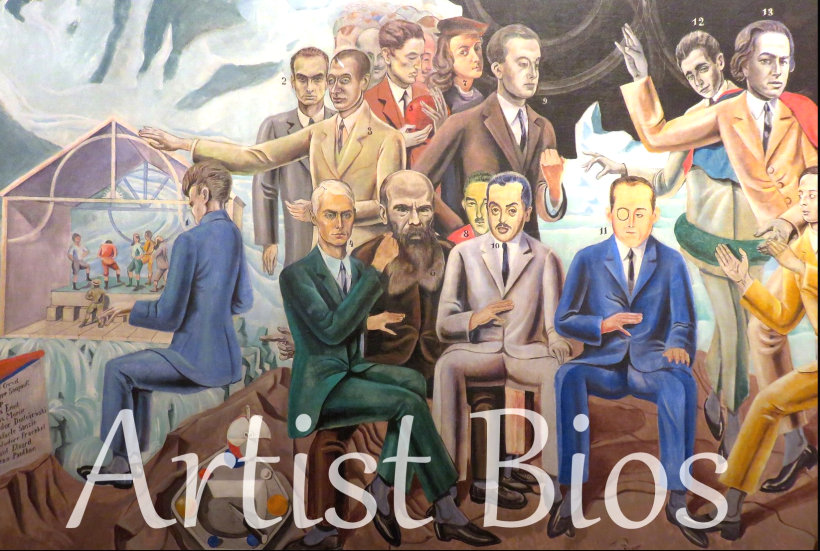GO TO: [A–C] [D–F] [G–K] [L–N] [O–R] [S–U] [V–Z]
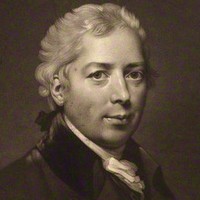
Working in London, Abbott has a successful career as a portraitist (painting Admiral Nelson among others) until he went insane. 3.

Wikipedia notes that "the success of Angeli at painting society portraits was partly due to his skill in depicting uniforms, pearls, and other jewels." Yet Queen Victoria praised his late portraits of her for their "honesty, total want of flattery, and appreciation of character.” 2.
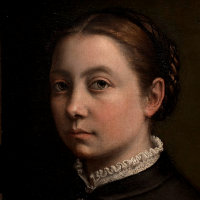
Though given a good humanist education by her noble parents, she obtained her artistic training through apprenticeships with Cremona painters. Her long career, mainly as a portraitist, included a decade as painter to the Spanish royal court. 5.
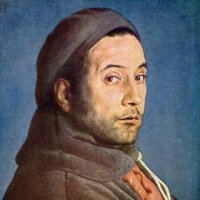
Completely eschewing the innovations of modern art, Annigoni painted in a realistic style based closely on the art of the early Renaissance. His 1954 portrait of Queen Elizabeth II led to commissions to paint Pope John XXIII, President Kennedy, the Shah of Iran, and many others. 2.
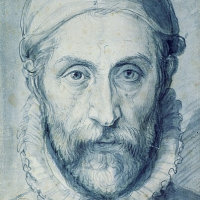
Arcimboldo was born in Milan and began his career as a conventional portraitist. In this capacity, he entered the service of successive Holy Roman Emperors in Vienna and Prague, beginning in 1562. It was then that he developed the style for which he is now best known, painting "portraits" composed entirely out of fruit, vegetables, and inanimate objects—a sideline whose wit was much appreciated by his patrons. 1.
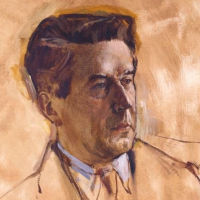
Like most choreographers, Sir Frederick Ashton began as a dancer, and continued performing even as his fame blossomed as a choreographer. He became artistic director of the Royal Ballet in 1963, but had worked with the company and its various predecessors since 1935, responsible for creating many of the works that are the foundations of English ballet today. 4.
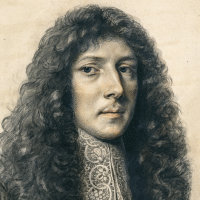
Aubrey took on numerous antiquarian projects, but left most of them unfinished. However, he did pioneering work as an archaeologist, and has secured a place in history for his debunking and often hilarious biographies of luminaries and hangers-on of the Elizabethan, Stuart, and Restoration periods collected as Brief Lives (1693). 8.
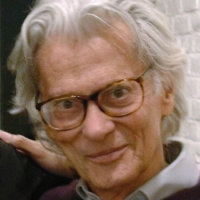
For over half a century, Avedon reigned as the leading figure in American photography. Working almost entirely in black-and-white, he began in the fashion industry, then turned to portraiture, then to racial and social concerns. In many ways, he redefined the field with the startling imagination and energy of his fashion photographs and his insistence in his portraits of showing every trace of a life long lived. 10.
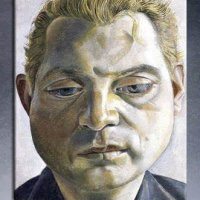
Bacon was born in Dublin to English parents, but left home in his teens to move to London and thence to Paris. He had no formal training as a painter, but when he emerged in 1945 with Three Studies for Figures at the Base of a Crucifixion, he both galvanized and divided critics by the fierceness of his imagination and savagery of his style. Alan Bowness, the former director of the Tate, wrote that "no artist in our century has presented the human predicament with such insight and feeling." 11.
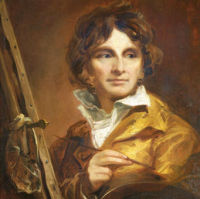
Born in Bath, the son of a minor painter, Barker moved to Paris in 1834 to study with Horace Vernet. After considerable success in France, he returned to England in 1845, becoming a fashionable portraitist and specialist in historical and battle pictures. His most famous picture, The Secret of England's Greatness (1863) is an icon of Empire, showing Queen Victoria handing a Bible to a kneeling Zulu chief. 7.

Barrett's principal claim to fame is his pair of group portrait scenes from the Crimean War: Queen Victoria's First Visit to her Wounded Soldiers and Florence Nightingale Receiving he Wounded at Scutari. 7.
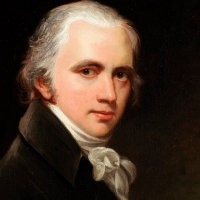
The son of a country lawyer, Beechey trained for the law himself, before pursuing a full-time career as a portraitist—one that eventually included an appointment at the royal court. John Constable was one of his pupils. 3.
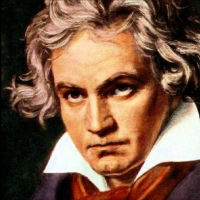
The dominant composer of his time, Beethoven wrote 9 symphonies, 16 string quartets, 32 piano sonatas, and one opera, Fidelio, which he labored on in several versions between 1805 and 1814. From about 1800 onwards, increasing deafness gradually put an end to his performing career, although he wrote some of his finest works when totally deaf. He is one of the first composers to exhibit a distinct late style. 8, 9.
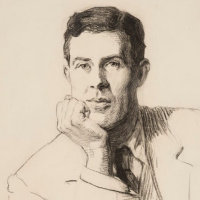
Bentley secured a small place in literary history with his pioneering detective novel Trent's Last Case (1913), and his middle name is enduringly attached to a particular form of 4-line biographical doggerel (the awkwardness in intentional) beginning with the subject's name. 8.

As a painter, Bernard was closely associated with Gauguin and worked in a gentler version of his style. He was also a prominent writer on art. 5.
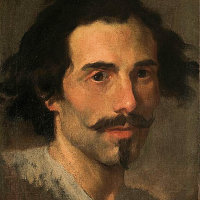
He is to the Italian Baroque what Michelangelo was to the Renaissance, the supreme master of many arts. The sense of movement and drama in his sculpture carries through into his architecture and even his town planning, such as the piazza before St. Peter's. 6.
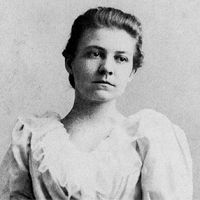
A published poet and novelist, and also an accomplished musician, Mattie (as she was called) is best known as the editor of several later collections of poems by her aunt, Emily Dickinson, and author of the memoir Emily Dickinson Face to Face (1932). 8.
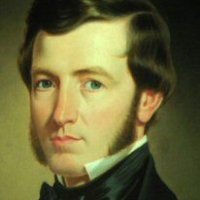
Originally a tanner by trade, he became one of the first American-born composers, essentially self-taught, writing hymns, somewhat more complex "fuguing tunes," and patriotic songs. 7.
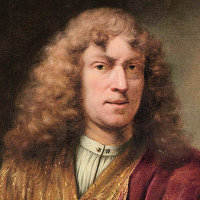
Much of his surviving work has been wrongly attributed to his master, Rembrandt, but in fact Bol rose to become the most successful Amsterdam painter in the mid-17th century. 7.

Boswell was born into a Scottish landowning family (he was Laird of Auchinleck), and trained as a lawyer in Edinburgh. But a restless nature (which may have been a bipolar affliction) caused him to travel, which in turn brought him into contact with Dr. Samuel Johnson, who in his hands became the subject of one of the earliest and finest of British biographies. 8.
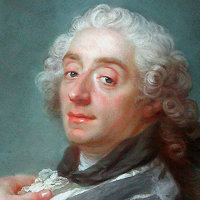
His many works, which virtually define the French rococo style, include several elegantly erotic treatments of mythological subjects, such as his Jupiter and Callisto, but also genre scenes, erotica, and even landscapes. 3.
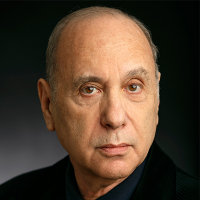
As a screenwriter, Brickman was best known as a collaborator with Johnny Carson and Woody Allen, sharing an Oscar for the screenplay of Annie Hall. With his partner Rick Ellice, he wrote the book for Jersey Boys in 2005. 4.
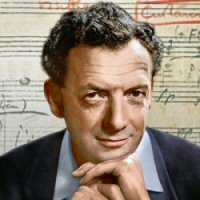
Arguably the leading opera composer of the mid-20th century, Britten's major operas have included Peter Grimes (1945), Billy Budd (1951), Gloriana (1953), A Midsummer Night's Dream (1960), and Death in Venice (1973), plus many stage works for smaller forces. He was equally active as a composer of instrumental music and text settings, and latterly as a conductor and accompanist. 2, 7.

Born in Hungary, Brocky worked in his youth as an itinerant actor before being sent to art schools in Vienna and Paris. Coming to London in 1838, he changed his first name to Charles, and soon found success as a society portraitist. 2.
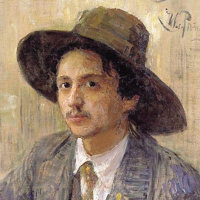
Brodsky "was a Soviet painter whose work provided a blueprint for the art movement of socialist realism. He is known for his iconic portrayals of Lenin and idealized, carefully crafted paintings dedicated to the events of the Russian Civil War and Bolshevik Revolution" [Wikipedia]. 1.

Bronzino (the nickname may refer to his dark complexion) trained under Pontormo, the leader of the Mannerist school. His own painting is generally calmer and more elegant, but somewhat cold. In addition to painting many religious and allegorical subjects, he also did numerous portraits as painter to the Medici court. 3.

One of the greatest of English Renaissance composers, Byrd probably studied under Thomas Tallis. In 1572 he was appointed Gentleman of the Chapel Royal, which furthered his career as a composer of choral music. In 1575, he and Tallis were granted a monopoly on music publication for 21 years. Although he wrote in all genres, Byrd converted to Catholicism later in life, and composed much Catholic sacred music. 2.
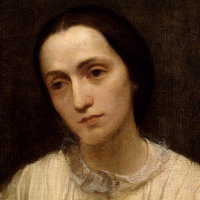
Julia Margaret Pattle was born in British India, and remained there until her mid-forties as a society hostess until her husband retired to England in 1845. In 1863, when she was 48, she received a box camera as a Christmas present from her daughter, as "something to amuse her." Indeed it did, and she became famous for her portraits of famous sitters, such as her neighbor Tennyson, and inventive restagings of literary works. 10.
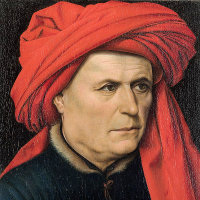
Campin has gradually emerged from scholarly shadows as the probable painter of a handful of works previously attributed to a conjectural "Master of Flémalle." In spite of the still-uncertain identification of many works associated with him, there is no doubt of his status as a key figure in the transition of Northern art from Gothic traditions to modernity. [The portrait here is by him, but probably not of him.] 1, 7.
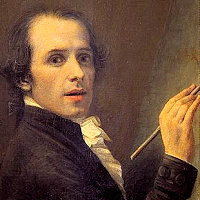
The most influential neo-classical sculptor of his day, and an acclaimed portraitist, Canova executed several mythological subjects earlier in his career, including a Daedalus and Icarus and Theseus and the Minotaur. 6.
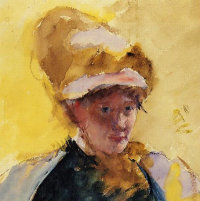
The daughter of a wealthy Philadelphia family, Cassatt studied in Paris and settled there in 1874. She became friends with the Impressionists, especially Degas, and exhibited in four of their shows. An early feminist, her own work featured especially the everyday lives of women. She also had an influence in persuading her wealthy friends back home to buy Impressionist paintings. 3.

With Gauguin and Van Gogh, though painting in a very different style from either, Cézanne is considered one of the leading artists of the Post-Impressionist period. Working first in an academic style, he was converted to Impressionism by his friend Camille Pissarro. After exhibiting in the first two group shows, however, he returned to his native Aix-en-Provence, living like a recluse and painting pictures whose play with space and surface would revolutionize 20th-century art. 9, 11.
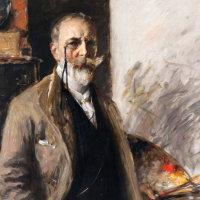
When working in Saint Louis, Chase caught the attention of some wealthy collectors, who funded a two-year study tour in Europe (mainly in Munich). He returned to America in 1878 as an artist versed in the heightened color and free brushwork of Impressionism, and prospered in that context both as a painter of society subjects and as a teacher. 9.
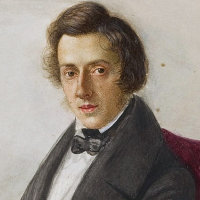
Chopin was a virtuoso pianist (though for the most part avoiding the concert stage), and wrote almost exclusively for the piano, in a variety of shorter forms, many reflecting the dances of his native Poland, which he left at age 20 to escape the consequences of a revolution. He spent his adult life in Paris, where he was a frequent guest at salons. He maintained a long relationship with the writer George Sand. 3.
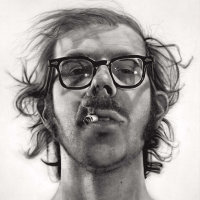
One o the leading photo-realists, Close developed a style of portraiture based on huge blow-ups of his own photographs, painstakingly transposed to the canvas stroke by stroke. Over his career, he gradually moved from black-and-white to color, later enlarging the pixels to give them an abstract life of their own—a transition accelerated by the results of 1988 seizure that confined him to a wheelchair. 11.
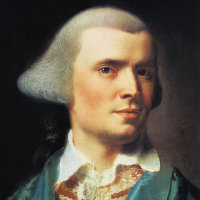
Born probably in Boston, Copley established himself as a portrait painter before moving permanently to London at the age of 36. He cemented his reputation with a number of history paintings such as Brook Watson and the Shark (1778), The Death of Chatham (1781), and several Revolutionary War scenes shown from the British perspective. 3.
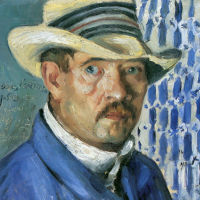
After training in Paris, he was hailed as a proponent of "German Impressionism," although his affinities were more with Rembrandt and Manet. Two things affected the Expressionist freedom of his later style: marriage to one of his young students, and his recovery from a crippling stroke in 1911. 5.
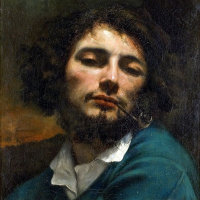
A fiercely realist painter from the provinces who stood proudly outside the academic tradition, Courbet was nonetheless one of the most powerful figures in 19th-century French art. His vast Burial of Ornans was a succès de scandale at the Salon of 1850, and established him as the leader of the Realist movement. 5.
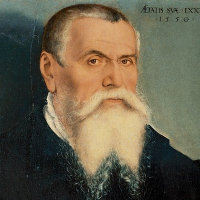
After some years in Vienna, he moved in 1504 to Wittenberg, as court painter to Frederick III. A close friend of Martin Luther's, he was one of the leading artists of the Protestant movement. 7.
GO TO: [A–C] [D–F] [G–K] [L–N] [O–R] [S–U] [V–Z]
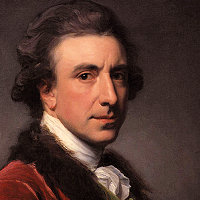
The son of an architect, Dance established himself as a society portrait painter, whose subjects included David Garrick, Captain Cook, and George III. In later life he entered politics and was made a baronet under the title of Sir Nathaniel Dance-Holland. 3.
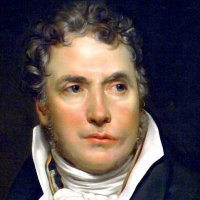
The leading Neoclassical artist of his day, David replaced rococo frivolities with stern history paintings with strong moral content. He was a dedicated supporter of the Revolution and politically active as a Deputy. He was imprisoned briefly after the fall of Robespierre, but resurfaced as principal painter to Napoleon. Through his many pupils, he influenced French salon style for a generation. 6.
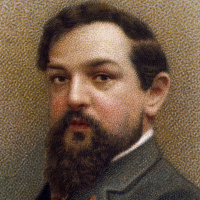
Debussy was one of the most original French composers of the 20th century and, with Ravel, the prime exponent of what is commonly called Impressionism, the creation of musical images through harmony, texture, and scraps of melody. Although an exquisite orchestrator, his most original works are probably those written originally for piano, including two books of Préludes from the last years of his life. 7.
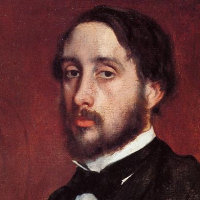
The son of a wealthy banker, he originally trained for the law. When he did go into art, he painted mostly traditional subjects until Manet introduced him to the Impressionists, at which point he turned entirely to scenes from everyday life—including a good number of portraits, mostly in informal settings. Although he was the only artist to participate in all eight Impressionist shows, he strongly resisted the term, and pursued his own quite original course. 1, 7, 9, 11.

Elaine Fried married Willem de Kooning in 1943, and he became her teacher. While sharing some Abstract Expressionist qualities with her husband, her own work was mostly figurative, including portraits of John Kennedy and others. Though she tirelessly promoted her husband's work and exhibited under their shared name, she chafed at always being seen in his shadow. 10.
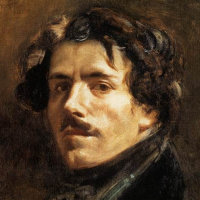
The leading French painter of the Romantic movement, he is known for his brilliant Rubensian color and his dramatic compositions. Especially in the first half of his career, these included political themes, such as The Massacre at Chios (1824) and Liberty Leading the People (1830), as well as subjects from Romantic literature. He also visited North Africa, and was constantly fascinated by the exotic. 3, 7.

Delaroche studied with Gros, but unlike him preferred historical themes to contemporary ones. He favored the rich palette and moody lighting characteristic of Romanticism, but would depict his subjects with a realism that downplayed heroism or glamor in favor of dramatic understanding. 6.

Demuth (accent probably on the first syllable, although there is some controversy) worked mainly in watercolor in his early career, later turning to oils, especially of architectural subjects, in a style that he called "precisionism" (or cubo-realism by others). He was also noted for a series of semi-abstract "poster portraits" he made of friends in the late 1920s, among them I Saw the Figure 5 in Gold for William Carlos Williams. 11.
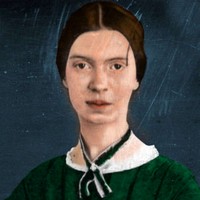
As she lived in Amherst for her entire life, latterly refusing to leave her family home, Dickinson's prolific output was virtually unpublished in her lifetime, and was subject to editing after her death to bring it more in tune with contemporary aesthetics. But it is precisely the unconventional nature of her verse, with its short lines and slant rhymes, that has led to her recognition as one of the leading American poets of her time. 8, 9.

After service in the First World War, recorded in some of his most savage paintings, Dix became a critical commentator on social conditions in the Weimar Republic. 11.
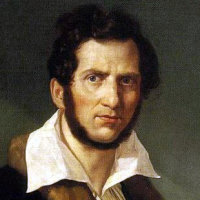
One of the leading composers of historical and romantic operas in the bel canto era, including a trilogy featuring Queen Elizabeth I, plus comedies in both Italian and French, Donizetti nonetheless began his career with a mythological scene, Pygmalion. 2.
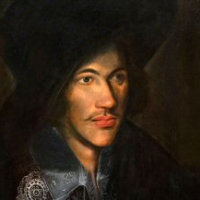
Though classed with the Metaphysical Poets of the early 17th century, he had an immense range, from erotic to sacred, characterized by an extraordinary intensity. He took holy orders later in life, and was appointed Dean of St Paul's Cathedral. 3.

Dove, who spent some time in France in the ferment of the first decade of the century, is credited with painting the first abstract pictures in America, although he did not exhibit them at the time. 8.
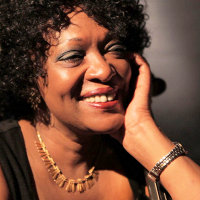
Dove is a Pulitzer Prize winner (1987) and a former Poet Laureate (1993–95). She teaches at the University of Virginia. Her work is wide-ranging and addresses a variety of themes, including the life of the Black violin prodigy George Bridgetower, the original dedicatee of Beethoven's Kreutzer Sonata, whose tragedy she explored in her 2009 book Sonata Mulattica, 8.

In his youth, Drummond served an apprenticeship as a merchant seaman and, after training at the Royal Academy schools, he specialized in subjects from British maritime history. 3.

The greatest German draughtsman of the Renaissance and a formidable intellect, he produced an astonishing series of woodcuts and engravings throughout his career, as well as a number of devotional paintings and portraits, plus numerous sketches and watercolors that testify to his extraordinary powers of observation. 5.
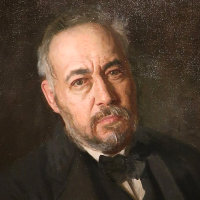
Philadelphian Thomas Eakins is now counted among the greatest American-born painters of the 19th century, but in his day he was ridiculed for his insistence of realism in his portraits and scenes from everyday life. His legacy lives on, however, in the work of the Ashcan School and other painters at the turn of the century who began to give American art a distinct national style. 7, 10.
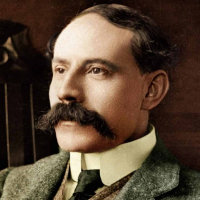
Elgar was the leading figure in English music during the late Victorian and Edwardian eras. With works such as the Enigma Variations and his concerti for violin and cello, he was one of the first English composers after Purcell to achieve an international reputation. 2, 4.

Born in NYC, Elice studied at Cornell and Yale, then taught for a year at Harvard. After working as an actor, he moved backstage as an impresario, a creative consultant for Disney, and (with Marshall Brickman) writer of the 2005 show Jersey Boys. 4.
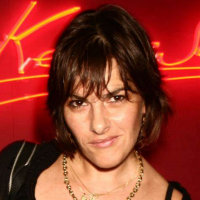
Notorious for her confessional installations, Everyone I Have Ever Slept With 1963–1995 (a tent appliqued with the names of her many partners) and My Bed (the debris of a depressed week in bed in 1999), Emin is also Professor of Drawing at the Royal Academy, 11.
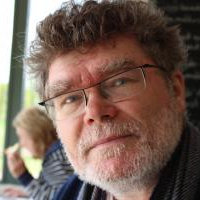
After studies at Cambridge and in Rome, Feeney made a name for himself as a composer of ballet and modern dance. He has created over 40 scores for Ballet Central in London, plus others for Northern Ballet Theatre, the Martha Graham Company, and the Royal Ballet. His score for Cathy Marston's The Cellist (2020) includes references to the many works famously associated with its subject, Jacqueline du Pré. 4.
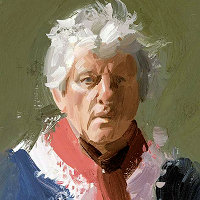
Born into a military family, Festing attended a military school and served in the army for a decade. He then worked for a while at Sotheby's before taking up portrait painting full-time in 1981. Many official commissions came his way, including from the Royal Family, leading ultimately to his election as President of the Royal Society of Portrait Painters in 202. 2.
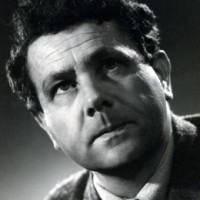
Although he composed in other genres, Finzi is best known for his vocal works, such as the cantata Dies Natalis (1939), his Shakespeare cycle Let Us Garlands Bring (1942), and many settings of Thomas Hardy. 11.
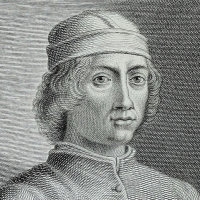
Francia, whose real name was Francesco Raibolini, was an Italian painter, goldsmith, and medalist from Bologna, who was also director of the city mint. He was friends with Raphael, and painted somewhat in his style. 1.
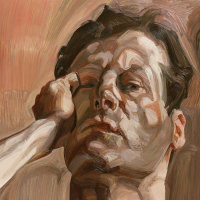
Born in Berlin, the grandson of Sigmund Freud, Lucian came to Britain in 1931 with his parents and became a British citizen in 1939. One of the leading representational painters in postwar Britain, he was also her leading portraitist, albeit in an uncompromising and less traditional style. 11.
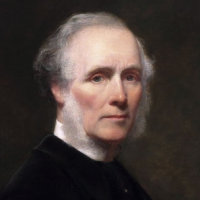
Frith began his career as a portrait painter (his subjects including Charles Dickens), but branched out to literary and genre subjects and the vast panoramas of contemporary life such as Derby Day and Railway Station that became his best-known legacy. 3.

Though born and trained in Germany, Füger was Court Painter in Vienna for most of his career. It was there that he painted his portrait of Horatio Nelson, who was passing through, the only one to depict the Admiral in civilian clothes. 3.
GO TO: [A–C] [D–F] [G–K] [L–N] [O–R] [S–U] [V–Z]
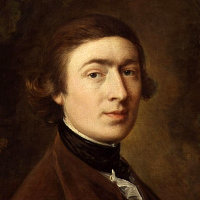
He became the dominant English portrait painter in the second half of the 18th century, but also produced numerous independent landscapes for his own pleasure. In 1768, he became a foundation member of the new Royal Academy. 7.
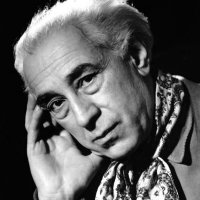
Abel Gance (born Abel Eugène Alexandre Péréthon) was a French film director, producer, writer, and actor. A pioneer in the theory and practice of montage, he is best known for three major silent films: J'accuse (1919), La Roue (1923), and Napoléon (1927) [Wikipedia]. The latter, which was one of the most technically adventurous films of its time, was intended as the first of a series of six, but as it runs to 5½ hours the full project was never realized. 6.
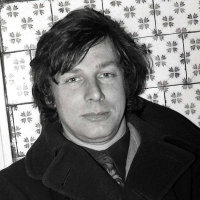
Garland is listed by Wikipedia as the only director to have had four productions running simultaneously in London's West End. In addition to that, he has worked as an actor, and as a presenter for BBC-tv. With Ted Hughes, he founded Poetry International shortly after leaving Oxford. And his one-man-show compilation of John Aubrey's Brief Lives holds the record for the most performances in a role by the same actor (Roy Dotrice). 8.

Influenced at first by the Impressionists, Gauguin soon abandoned that style for one that involved large flat areas of pure color. He is associated with three areas: Brittany, where he developed his style; Provence, where he lived with Van Gogh; and Tahiti, perhaps indulging a taste for the tropics inherited from his Peruvian mother. He is considered one of the giants of the Post-Impressionist period. 5.
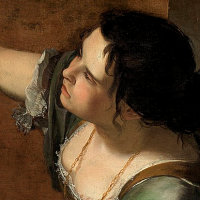
Trained by her father Orazio Gentileschi, Artemisia began producing work in her teens that outstripped his in dramatic power and psychological observation, especially in her portrayals of strong women. She was the first woman to be elected to the Florentine Academy and, at 23, one of its youngest members. 5.

Géricault's monumental Raft of the Medusa (1819) was a seminal work in French art, treating a contemporary political scandal with searing humanity coupled with a monumentality that owes much to Michelangelo. His many studies for this work, including corpses and severed limbs, his portraits of the insane, and above all his numerous paintings of horses, made him a key figure in French Romanticism until his death from a riding accident at the age of 32. 1, 5.
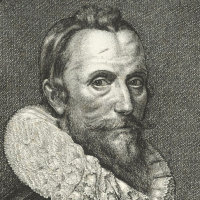
Gheeraerts was brought to England by his father, also a painter, and became one of the most successful portraitists in the Elizabethan and Jacobean courts. 2.
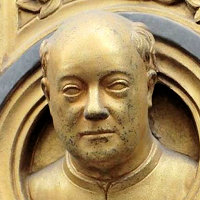
He came to prominence in 1401, defeating Brunelleschi for the design of doors for the Florence Baptistery. He followed these up in 1437 with the design of an even grander set of doors, dubbed by Michelangelo the "Gates of Paradise." 5.
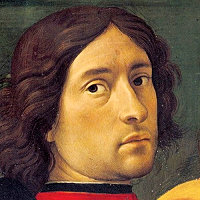
In the same generation as Botticelli, Pollaiuolo, and Verrocchio, Ghirlandaio achieved success through his ability to execute large-scale subjects that often included portraits of his wealthy patrons. He was also a remarkably sensitive in his independent portraits, including the famous Old Man and his Grandson in the Louvre. Michelangelo was one of his pupils. 1.

Girodet was a student of Jacques-Louis David's, and like him spent several years in Italy. His manner is generally more Romantic, however, with a particular interest in evocative lighting effects. In adulthood, he styles himself Girodet-Trioson, in honor of the man who adopted him (and may well have been his natural father). 6.
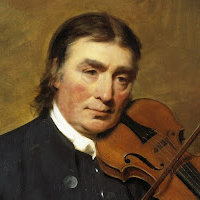
Gow was a fiddler whose developed a career under the patronage of the Duke of Atholl. The many tunes he wrote (or borrowed) as a composer still form the basic repertoire of Scottish dance music, though there are some such as the moving Lament on the Death of his Second Wife that have an independent existence. 3.
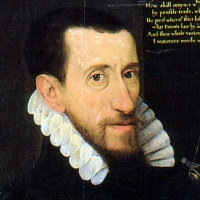
Gower was a portrait painter who became Serjeant Painter to Queen Elizabeth I in 1581. The original Armada Portrait, once attributed to him, is now thought to be by an unknown artist, but there are a number of uncontested paintings of the Queen and figures in her court. 2.
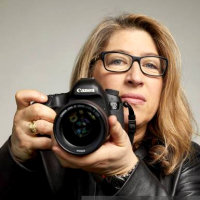
Greenfield got involved with the application of film and photography to social concerns while still an undergraduate at Harvard. Most of her work in both mediums has been to document the traps that people fall into (particularly women) relating to such things as body image and the consumer culture. 10.
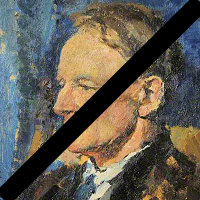
Green grew up in Suffolk. Perhaps because of this, he did some work with his younger contemporary from the same area, Benjamin Britten, painting his portrait and doing costume designs for Peter Grimes (also set in Suffolk). Principally, however, he was in demand as a portrait painter, often of people with links to the arts. [The image here is by him, not of him.] 7.
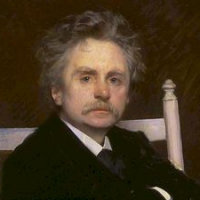
A member of a musical middle-class family in Bergen, Grieg studied at the Leipzig Conservatory, then moved to Copenhagen, where he began his career as a pianist. It was only then that national characteristics of folk-song, rhythm, and harmony began to enter his work. He became in effect the leading composer of Norwegian nationalism, much as Sibelius was in Finland, but less aggressively so, expressing himself mainly in shorter forms, belonging to the salon rather than the symphony hall. 5.
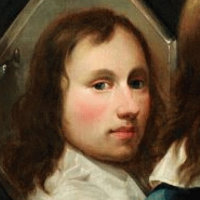
Coming from a family of painters, little is known about Gumpp as an individual other than his extraordinary triple self-portrait in the Uffizi. 5.
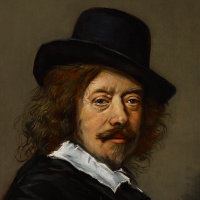
Though born in Antwerp, he moved to Harlem with his parents and spent the rest of his life there. 24 years older than Rembrandt, he was the first great master of the Dutch Golden Age and its leading portraitist. His style is remarkable for the effects he could achieve from a few swift touches of paint. 7.
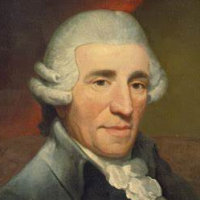
With Mozart, Haydn was the leading musical genius of the late 18th century. Equally prolific, but far longer lived, he wrote 104 symphonies, 68 string quartets, 16 operas, and 14 masses, together with the two great oratorios, The Creation and The Seasons. 3.
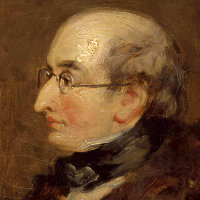
Haydon painted grand historical subjects, often on a large scale, along with contemporary scenes and portraits of Wordsworth and others. Apparently he was difficult to deal with. 6.
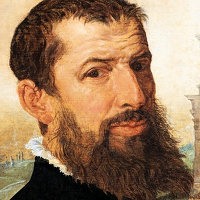
After training in Utrecht and opening his own studio in Haarlem, he made a long visit to Italy (1532–36) which made a strong impression on his subsequent art, especially the example of Michelangelo. 7.
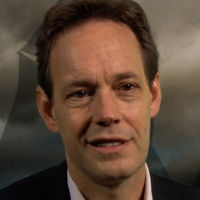
Heggie came to fame as an opera composer in 2000, with his adaptation of Dead Man Walking by Sister Helen Prejean, who appears as a character in the opera. He went on to write an operatic version of Moby Dick (2010), a dramatically impressive condensation of Melville's huge book, to great critical acclaim. 4.

Ronger, who worked under the pseudonym Hervé was a singer, composer, conductor, theater manager, and scene painter. Beginning at the the Théâtre du Palais Royal in 1851, he launched the operetta form in France, paving the way for Offenbach, whom he originally invited to Paris, before falling out with the more successful composer. 3.
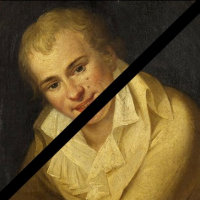
Born in Bohemia, Hickel spent most of his career in Vienna and other cities in continental Europe. However, a stay in London in the 1790s enabled him to paint the House of Commons and many of its luminaries, most of which pictures are now in the National Portrait Gallery. [The image is by him, not of him.] 3.
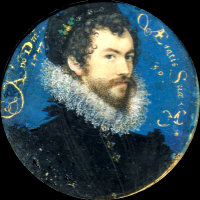
Hilliard is best known for his numerous portrait miniatures, capturing the personalities and styles of the Elizabethan and Jacobean courts, including portraits of the Queen herself over a 30-year span. 2.

Hodges "was a member of James Cook's second voyage to the Pacific Ocean and is best known for the sketches and paintings of locations he visited on that voyage, including Table Bay, Tahiti, Easter Island, New Zealand, and the Antarctic." {Wikipedia] 3.
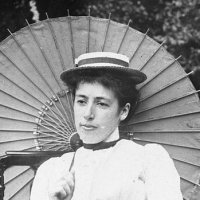
Hodgkins was a New Zealand artist of landscapes, still-lifes, and portraits (including what she called "portrait still-lifes") who spent most of her career in Europe. Although she came to modernism comparatively late, by the end of her life she was regarded as one of the leading modernists in Britain. 11.
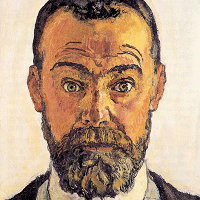
"Ferdinand Hodler was one of the best-known Swiss painters of the nineteenth century. His early works were portraits, landscapes, and genre paintings in a realistic style. Later, he adopted a personal form of symbolism which he called parallelism." [Wikipedia] He also did a remarkable set of sketches of his lover as she lay dying of cancer. 11.

The son of a painter, Holbein was born in Augsburg but soon moved to Basel. He spent much of career in London, where he was court painter to Henry VIII; many of the leading figures of the time we now picture through his eyes. He favored a highly realistic style, full of details that fill out the life and circumstances of his sitters. 1.

A pioneering photographer, Howlett photographed the Crimean War then numerous events in Britain, including the construction of the world's largest steamship, the SS Great Eastern, under its architect IK Brunel. He also took photographs for the painter William Powell Frith to aid him in his large compositions. 3.
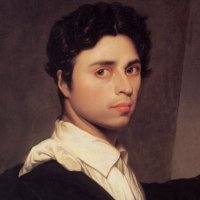
Ingres was trained in the academic tradition, and indeed spent 7 years as Director of the French Academy in Rome. Although one of the great masters of French Romantic era, his style was always marked by a cool classicism and precision of line, in contrast to the freer handling of paint by his contemporary Delacroix. 9, 11.
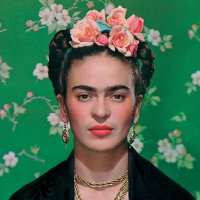
Although she had successful exhibitions in Paris and New York in the late 1930s, Kahlo's fame was largely overshadowed in her lifetime by that of her much older husband Diego Rivera. Since her death, however, interest has grown exponentially in the self-revealing nature of her work, which unites traditional Mexican qualities to a touch of Surrealism. 5.
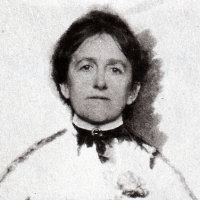
Though living relatively comfortably as the wife of a New York businessman, Gertrude Käsebier began to attend art school in her late thirties. Her approach to photography was closer to that of a painter than a technician, and she became involved with Alfred Stieglitz's Photo-Seccession group from its formation in 1902. She became known "for her images of motherhood, her portraits of Native Americans, and her promotion of photography as a career for women" [Wikipedia]. 10.
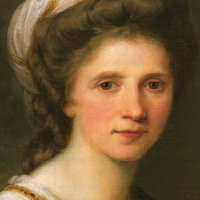
Moving to London in her twenties, she became a foundation member of the Royal Academy as a portrait painter, but moved to other subjects, first in England and later in Italy. 3.

Coming from a family of artists, Keijzer (also spelled Keyser) was the leading portraitist in Amsterdam before being eclipsed by Rembrandt in the 1630s. He is known especially for his group portraits. [The portrait here may be by him, but is probably not of him.] 7.
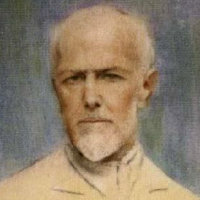
Although allied with the Symbolist movement, Khnopff was a very private person and his works seem to hide behind their smooth pale surfaces and almost photographic detail. 3.
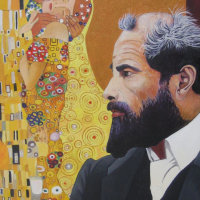
Klimt was the foremost painter of the Vienna Seccession at the turn of the century. He specialized in female subjects, some taken from myth, painted in a highly-patterned Symbolist style, erotic and richly colored, often with the addition of gold leaf. His Danaë of 1907 is a prime example. 1, 11.
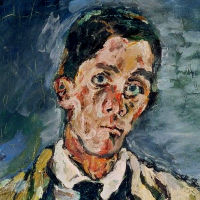
One of the leading Expressionist painters in Vienna, Kokoschka was also a poet and playwright. Starting mainly as a portraitist with a distinctive style of very free brushwork, he widened his interests to include landscapes, cityscapes, and other subjects when he began to travel in the later 1920s. Denounced as degenerate by the Nazis, he became first a Czech and later a British citizen. 11.
GO TO: [A–C] [D–F] [G–K] [L–N] [O–R] [S–U] [V–Z]
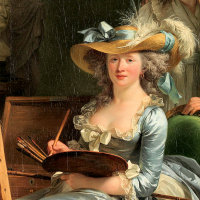
Specializing in portraits and miniatures, Labille-Guiard was one of the first women admitted to study at the French Royal Academy, and the first woman allowed to open a teaching studio at the Louvre. 5.
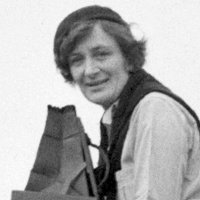
During the Great Depression, Lange abandoned her work as a society portraitist in San Francisco to work for the Farm Security Administration documenting the plight of migrants fleeing the Dust Bowl—a theme similar to John Steinbeck's The Grapes of Wrath. Her most famous picture Migrant Mother (1936) put an individual human face (Florence Owens Thompson) on mass suffering. 10.
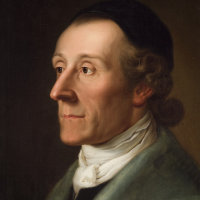
A poet, social activist, and Protestant pastor, Lavater is now best remembered for his book on physiognomy he published in the late 1770s, illustrated with silhouettes, claiming that a person's character is directly reflected in the shape of his or her features. It was widely admired, and silhouette-taking became something of a craze. 1.
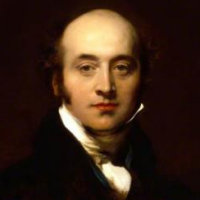
The outstanding portrait painter of the early 19th century, Lawrence combined truth to the character of his illustrious patrons with a Romantic flair for brushwork and color. 3.
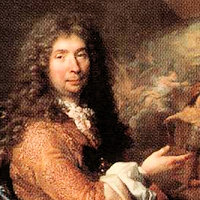
One of the geniuses behind Versailles, his Bassin de Apollon fountain shows Apollo (as Louis XIV) drawing the chariot of the Sun out of the waters. 6.

Le Nôtre worked with Louis Le Vau at Vaux-le-Vicomte and was engaged by Louis XIV to achieve similar marvels of garden design on an even larger scale at Versailles. A pioneer in the field, his work was emulated at other great houses around Europe. 6.
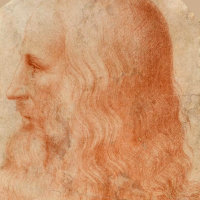
With Michelangelo and Raphael, one of the triumvirate of artistic geniuses that crown the High Renaissance. He trained in Florence with the painter Andrea Verrocchio before moving to the court of Ludovico Sforza in Milan. He spent the last years of his life at the court of François I in France. The naturalism and luminosity of his painting, and his effects of sfumato (or modeling as if by smoke), were widely influential. It is his notebooks, however, that are the best testament to the range of his genius, containing remarkable observations of the natural world, and mechanical inventions centuries before their time. 1.
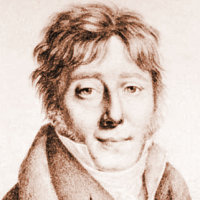
The nephew of painter Eustache Le Sueur, he had some early success but was struggling when Napoleon picked him as maître de chapelle at the Tuilleries. In this and similar capacities, he composed the music for the Emperor's coronation, as well as an opera on the Gaelic bard Ossian, a favorite of the Emperor's. 6.
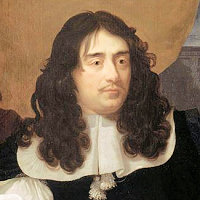
As principal architect to Louis XIV, Le Vau designed major additions to the palaces of Vincennes, the Louvre, and most notable Versailles. He is also noted for the moated chateau of Vaux-le-Vicomte and the Collège des Quatre Nations, now the Institut de France, across from the Louvre. 6.

Though born in Venice, and showing some affinity with Venetian light an color, Lotto worked mainly in other northern Italian cities. He painted many religious works, but his greatest achievement was as a painter of portraits that show both psychological penetration and often original design. 1.
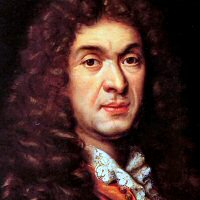
Lully became master of music to Louis XIV, writing music in all genres, but most especially operas and ballets. His operas include Alceste (1675), Atys (1676), Persée (1682), and Armide (1686). 6.
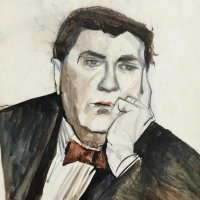
MacLiammóir ended his life justly celebrated as one of Ireland's greatest actors and playwrights (in both English and Irish); he was also a co-founder of Dublin's famous Gate Theatre. But he was born Alfred Lee Willmore in the London suburb of Willisden to a family with no Irish connections whatsoever; the persona under which he led his entire life was totally his own invention. 4.
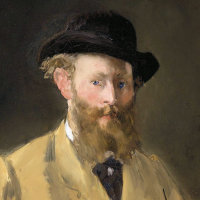
Manet is arguably the greatest French painter in the third quarter of the 19th century. Though primarily a realist, he was influenced by older artists such as Titian and Velasquez. He was admired by the young Impressionists, became friends with Monet, and produced a number of works in their style, but he never exhibited with them, preferring to retain his own status in the official Salons. 9.
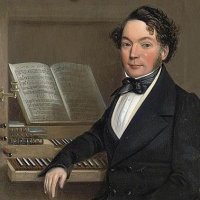
Marsh was an English composer of the classical period whose works, eclipsed for a while, are now enjoying a limited revival. A lawyer by profession, he also pursued interests in astronomy and philosophy. 3.

Trained at the Royal Ballet School in London, Marston began her career as a dancer in Switzerland, with the ballet companies in Bern, Luzern, and Zurich. She later became Artistic Director at Bern, and now occupies the same post in Zurich. Her independent works as a choreographer include Jane Eyre for Northern Ballet, Victoria for the National Ballet of Canada, and The Cellist (2020) for the Royal Ballet. 4.
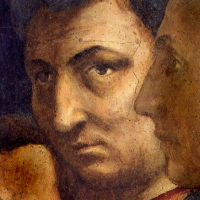
Though he died at the age of 26, he brought about a revolution in painting and is one of the founding fathers of the Italian Renaissance. His finest work is probably the fresco cycle on the life of St. Peter in the Brancacci Chapel at Santa Maria Novella in Florence (1425–28), working alongside the painter Masolino; the names mean "big Tom" and "little Tom" respectively. 5.

Matisse and Picasso stand as the giant pillars of French art in the first half of the 20th century. Matisse was the slower starter and the less versatile, but he stands alone for the richness of his color and the sensuality of his forms, whether in painting or in sculpture. Suffering from crippling arthritis at the end of his life, he produced a completely new oeuvre in colored-paper collage. 7.
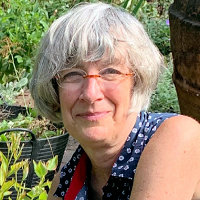
After working originally as a horticulturalist, McDowell turned to writing, producing beautifully designed books that view the life of an author (Frances Hodgson Burnett, Laura Ingalls Wilder, and Emily Dickinson) through the gardens they kept. 8.
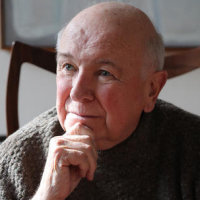
McNally wrote more than 40 plays over a span of six decades, winning most of the awards in the American theater. He also wrote the books for musicals such as Ragtime and The Full Monty and the libretti for three operas by Jake Heggie, including Dead Man Walking in 2000. 4.
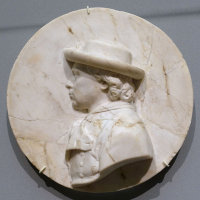
Messerschmidt was a Bavarian sculptor originally working in a conventional style. Today, he is best known for the series of "character heads" he produced late in his life, each grimacing in some intense emotion. There is debate, however, about whether these reflected some disorder in the artist's mind or were merely technical exercises. 1.
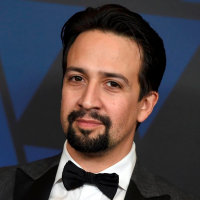
As the playwright, lyricist, composer, and star performer in his 1915 mega-hit Hamilton, Miranda became an unheard-of quadruple-threat on Broadway. He had shown many of the same talents, however, in his 2005 musical In the Heights, and has since developed his career further into film (both acting and directing). 4.
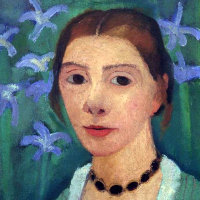
Paula Becker was a leading painter in the German Expressionist movement, and the only significant woman in the circle. She was the first woman to depict herself both nude and pregnant, and also the first woman to have a museum (in Bremen) entirely devoted to her art. In 1901, she married Otto Modersohn, an older and less adventurous artist. 5.

Born in Italy, Modigliani studied Renaissance art, which was a clear influence on his later paintings: the clarity of the quattrocento and the elongated rhythms of the Mannerists. He moved to Paris in 1906, and immediately associated with the avant garde. Although he struggled financially before his premature death (alcoholism and tuberculosis), his portraits were much appreciated soon after. 11.
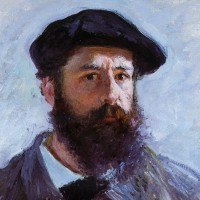
The central figure in Impressionism (it was his Impression: Sunrise of 1872 that gave the movement its name), he intensified its focus more than any other artist, continuing well into the next century to produce series of paintings showing minute variations in the light and color in basically the same scene. Cézanne famously said of him, "Monet is nothing but an eye—but my God, what an eye!" 9.

Morgan was born in London to refugee parents (from Germany and Poland), but his career as a playwright and screenwriter has been largely devoted to quintessentially British subjects, such as The Queen (2006), The Other Boleyn Girl (2008), The Audience (2013), and The Crown (2016–23). 2.
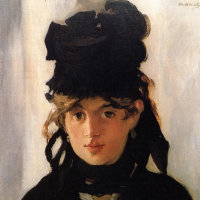
A descendant of Fragonard, pupil of Corot, sister-in-law of Manet, and later member of the Impressionist group, she brought a fine sensibility to her mainly domestic subjects painted in her characteristic limpid style. Some of her landscapes, however, could be as strong as any of her male colleagues. The portrait is by Manet. 9.
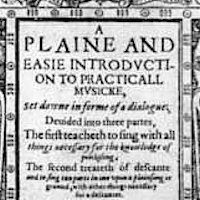
Organist of St. Paul's Cathedral, and the leading madrigal composer of the Elizabethan era, Morley was a friend of Shakespeare's and set songs from several of his plays, although it is not known if these were used in performance. [This is the title page of one of his publications; no portrait of him could be found.] 2.

Moroni was a Bergamo painter of the Mannerist period, noted for a small number of meticulous portraits and other works produced over a five-year timespan before he went into retirement. 3.
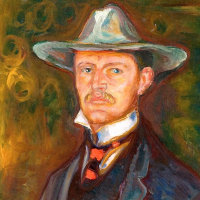
Tormented by the legacy of childhood trauma (he wrote "illness, madness, and death were the black angels that kept watch over my cradle"), Munch nevertheless managed to turn his neuroses into art that can stand with the most advanced painting in the rest of Europe and makes him a prime exponent of Expressionism. 5.
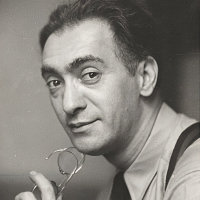
Born in Hungary, Muray emigrated to the US in 1913. He found work as a color printer, and his subsequent mastery of the color carbro process soon made him to go-to photographer for celebrity portraits, magazine covers, and advertising stills. 10.
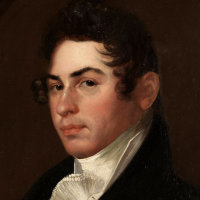
A pupil of Thomas Sully, Neagle became the most fashionable portrait painter in Philadelphia. The realism of his Pat Lyon at the Forge is therefore not typical of him, but was done at the request of the sitter. 3.
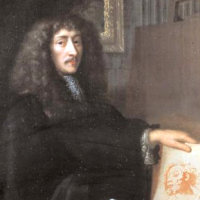
Nocret is known today for his royal portraits in the age of Louis XIV, especially his group showing the extended royal family in the guise of Greek gods. 6.
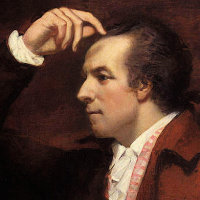
A pupil of Reynolds, he was moderately successful as a painter of portraits and historical subjects, and also wrote on the history of art. 3.
GO TO: [A–C] [D–F] [G–K] [L–N] [O–R] [S–U] [V–Z]
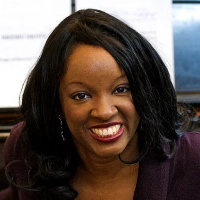
Born in New York, Okoye has an African American mother and a Nigerian father, and he childhood was divided between both countries. No stranger to the large stage, she has written an opera on the life of Harriet Tubman, and several projects commissioned by US symphony orchestras. 4.
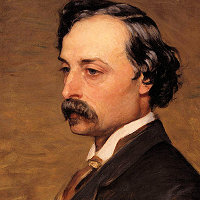
After beginning his career in Edinburgh, Orchardson moved to London at the age of 30. His relatively subdued works contain subtle observation of the social scene, and gradually attracted an appreciative public. He was knighted at the age of 75. 6.
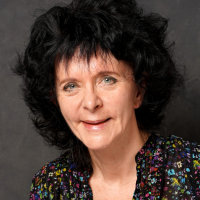
Padel became widely known after she was elected Professor of Poetry at Oxford (arguably Britain's highest literary accolade), but resigned almost immediately to bypass a scandal. She is a remarkable woman nonetheless, writing a PhD on classical Greek poetry, working as a professional musician, publishing novels and books on environmental issues, and writing several prizewinning collections of poetry, including verse biographies of Beethoven and Charles Darwin, her great-great-grandfather. 8.
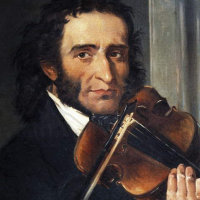
A virtuoso in the manner of a modern rock star, Paganini drew huge audiences wherever he played. Such was his virtuosity that he was rumored to be in league with the Devil. But there was nothing meretricious about his technique, which expanded greatly upon traditional practice, nor in the many works he wrote to play himself and challenge others. 3.
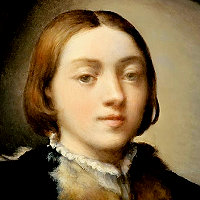
This precociously gifted painter was a leading figure in the Italian Mannerist style, characterized by elongated figures and somewhat chill lighting. He was also a skillful portraitist, starting with his own Self-Portrait in a Convex Mirror painted when he was 21. 5.
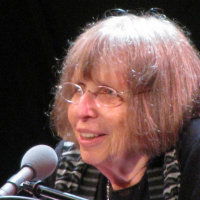
The former Poet Laureate of Maryland, "she was known for writing short poems that address topics like family life, domesticity, motherhood, the female experience, aging, death, loss and the fear of loss, as well as the fragility of life and relationships." [Wikipedia] 11.
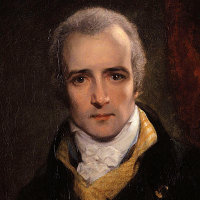
Among the leading portraitists in the first decades of the 19th century, Phillips painted artistic figures such as Blake, Byron, and Dibdin, and scientific ones such as Banks, Davy, and Faraday, in addition to the usual complement of politicians and aristocrats. 3.
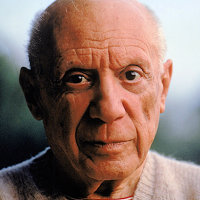
Picasso's invention of Cubism around 1910 (with Georges Braque) made him arguably the most important figure in 20th-century art. However, his entire career from precocious youth to energetic old age was distinguished by rapid changes of style, constant experimentation with new media, and a gift for finding the exact image to capture an historical moment, as in his Guernica of 1937. 11.
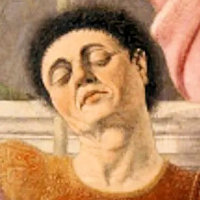
Born in Borgo San Sepolcro in Umbria, he also worked in Arezzo, Urbino, and elsewhere. Though virtually forgotten after his death, he has been reappraised in the 20th century as filling the gap between the early and High Renaissance. Intensely interested in perspective, his work has a mathematical rigor that adds tautness to his often unconventional compositions, and his gift for color is matched by few others of his time. The self-portrait is conjectural. 7.
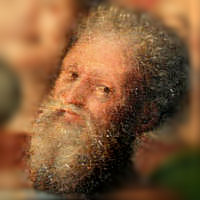
A Florentine renaissance painter at the turn of the century, very little is known about him other than the very entertaining account in Vasari's Lives, which is difficult to correlate with actual works. 3.
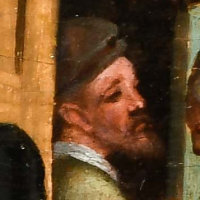
Little is known about this painter of the earlier Golden Age, other than some portraits and allegories. [This detail from one of Pieterz's paintings is only a possible self-portrait.] 7.
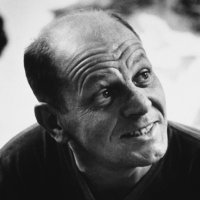
For many people, Jackson Pollock's "drip paintings," created by pouring paint directly onto raw canvas attached to the studio floor, are the defining image of Abstract Expressionism, and certainly the source of the alternative description, "Action Painting." But Pollock, who was born in Wyoming, studied with Thomas Hart Benton, and worked in the WPA project of the 1930s, reached this style only through a long process of moving through a kind of semi-abstract surrealism. 3.
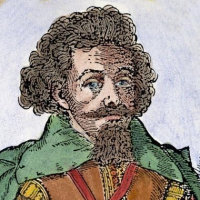
Though a polyglot and educated in theology as well as music, he began his career as a church organist and then as court musician to the Duke of Brunswick. The Duke's successor, however, encouraged him to produce religious music in what was now the Lutheran tradition. His published collections of dance music, sacred music, and theoretical writings tell us much of what we know of the music of his time. 1.
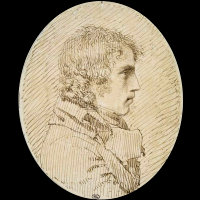
Prud'hon spanned the transition in French art between Classicism and early Romanticism, and the drama of his allegorical paintings was much admired. But his greatest legacy is probably as a portraitist, including a lovely informal portrait of the Empress Josephine and some strikingly lively sketches of other female sitters. 9.
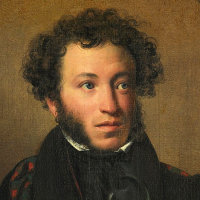
While in exile because of verses critical of the Tsar he wrote his most celebrated play Boris Godunov. His masterpiece is the novel in verse Eugene Onegin, serialized between 1825 and 1832. While his range is extraordinary and an inspiration to later Russian composers, he is celebrated as much for restoring the Russian language (as opposed to French) as the vehicle for artistic expression. 6.
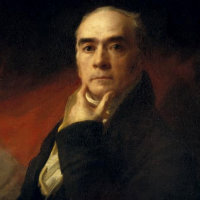
The leading Scottish portrait painter of his time, noted for the forthright quality of his technique, giving his figures an outstanding presence. 3, 9.
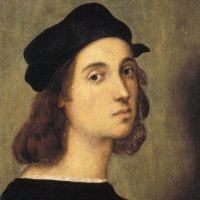
One of the towering geniuses of the Italian Renaissance, Raphael was born in central Italy, and worked there until 1508, when he moved to Rome to decorate several stanze in the Vatican for Pope Julius II, and later his successor Leo X. The influence of these and other works of the period can be seen in religious art for many centuries to come. He was also one of the many architects of St. Peters. 3, 5.
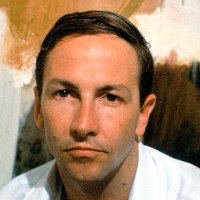
Rauschenberg famously stated that “painting relates to both art and life,” and he wanted to work "in the gap between the two.” He became famous for his Assemblages, paintings in an Abstract Expressionist style which incorporated real objects. He also made extensive use of photographs, screen-printed onto the painting surface. He was the winner of the International Grand Prize in Painting at the Venice Biennale of 1964. 11.
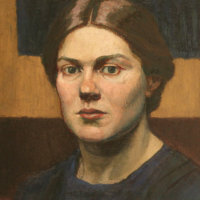
Although also active as a painter, Raverat was a founder of the Society of Wood Engravers, and a notable practitioner of the art itself. The granddaughter of Charles Darwin, she grew up in Cambridge and was active in the Bloomsbury Group, before moving with her husband, French painter Jacques Raverat, to the south of France. 7.

2016 MacArthur Fellow Lauren Redniss has published six books combining her words, her art, and a remarkable use of non-linear thinking, beginning in 2010 with Radioactive: a Tale of Love and Fallout about the Curies and the impact, for good or ill, of the discovery of Radium. Not all her later books are biographical, but all address serious socio-political concerns. 8.

The greatest artist of the Dutch Golden Age, he nonetheless retained his own style which set him apart from his contemporaries. There is a strong baroque influence earlier in his career, but his later work developed a quality of deep introspection in which the subject seems to glow within rich layers of paint. 5, 7.
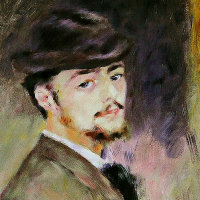
A leading member of the Impressionist group, he began his career as a china painter in the Limoges factory, which—together with his admiration of Rococo masters such as Watteau and Fragonard—may have influenced the sweetness of color seen in much of his work. He was more concerned with detail, and more interested in figures than most of his colleagues. 7.11.
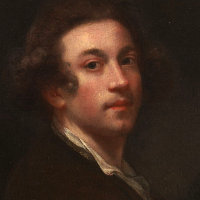
Reynolds was the leading portraitist of his day, the first president of the Royal Academy, and an important theorist of art. 3, 9.
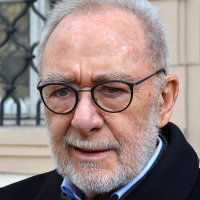
Richter, who at one point was the highest-earning living artist, has worked in numerous styles, including a very personal brand of lyrical and slightly out-of-focus photo realism. 11.

Rigau was born in a Catalan family in Perpignan, shortly before it was annexed by France. He trained in the provinces before moving to Paris in 1781, but soon established himself there as a vigorous portrait painter and meticulous recorder of costume. As a result, his portraits of Louis XIV from 1701 in the Louvre and the Prado are considered reference documents on the monarch's appearance. 6.

Born in Italy of a French family, Rigaud nonetheless spent most of his career in England, where he was a member of the Royal Academy. His oeuvre is roughly divided by portraits (including Reynolds and Nelson) and history paintings. 3.
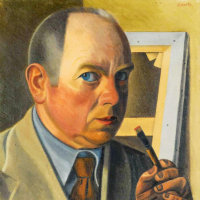
Roberts described his work before WW1 as that of an "English Cubist." After serving in the war, first as a gunner and later as a war artist, he became more representational in his work, though always slightly outside the mainstream. He was elected to the Royal Academy in 1966. 7.
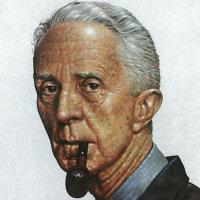
Rockwell began working as a professional illustrator at 18, and continued to become one of America's best-loved artists. His success had partly to do with the circulation of the periodicals (notably The Saturday Evening Post) that had him on their covers, and partly for his depiction of a family-friendly folksy America, but he was also an accomplished artist who could tackle serious subjects like racial and social injustice. 10.
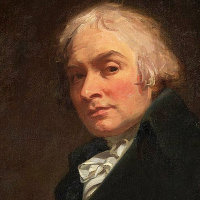
Born in the Northwest of England, Romney struggled when he came to London in 1762, as he seemed to have earned the enmity of Benjamin West, and was never invited to join the Royal Academy. All the same, he became one of the most successful portraitists of his time, somewhat Romantic in nature, and especially inspired by the actress Emma Hamilton (who was, however, the mistress of Admiral Nelson). 3, 9.
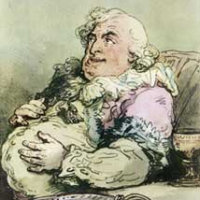
Although also a painter, Rowlandson is best known as the leading caricaturist of the Georgian era. His subjects include literary illustration, social observation, and political polemic. Most of his works were distributed in the form of hand-tinted engravings. The image is a self-portrait titles Discomforts of an Epicure. 8.
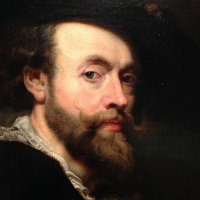
One of the giants of baroque art, Rubens developed the style of Titian into a powerful rhetoric applied equally to sacred and profane subjects, and exerted enormous influence in Spain, England, and France as well as in his native Flanders, continued in the work of his many pupils. His position at so many courts also made him invaluable as a diplomat. 1, 3, 5, 7.
GO TO: [A–C] [D–F] [G–K] [L–N] [O–R] [S–U] [V–Z]
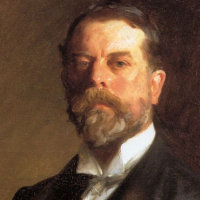
Sargent was born in Florence, the son of wealthy cultured parents, and much of his career was spent in Europe, although his rising fame as the preeminent society portraitist of his day also took him back to America. He is said to have hated portraiture, though, and diversified into landscapes and watercolors for his own satisfaction. 9.
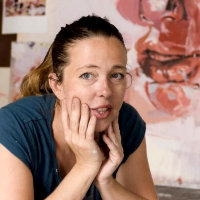
Educated at the Slade School and the Glasgow School of Art, Slade has made a name for herself especially for her paintings of large women's bodies, reclaiming the body from contemporary notions of beauty and societal expectations. 11.
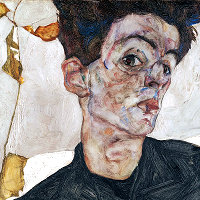
A follower of Gustav Klimt, who encouraged him throughout his career, Schiele early developed a highly energetic style of nervous lines and angled forms. Despite his tendency to depict his subjects as though gesticulating, he had some success as a portraitist, but is now better known for his frank depictions of sexual subjects. 11.
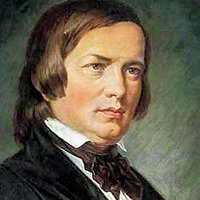
After an injury to his hand (while studying with his future father-in-law Friedrich Wieck) prevented him from pursuing a career as a pianist, he concentrated on composing, producing some of the key works of the Romantic piano literature, together with chamber music, a concerto, four symphonies, and a wealth of songs. He was also a public figure as a critic and thinker. His career was cut short by bipolar disorder. 1.
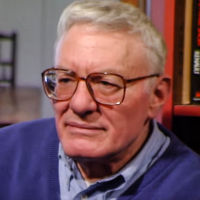
Sir Peter Shaffer's plays have been associated with the English National Theatre since its founding; they include The Royal Hunt of the Sun (1964), Black Comedy (1965), Equus (1973), and Amadeus (1979). He was the twin bother of mystery playwright Antony Shaffer, author of Sleuth (1970). 4.
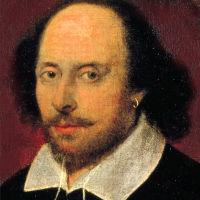
With almost 40 plays, 154 sonnets, and many longer poems, Shakespeare dominates English literature of his time, and world literature for ever after. To attempt a thumbnail biography would be both unnecessary and impossible. 4.

Sherman's work consists primarily of photographic self-portraits, depicting herself in many different contexts and as various imagined characters. Her series of 70 Untitled Film Stills (1977–80) were black-and-white take-offs of B-movie films noirs. Later, she moved into large-format color photographs including detailed props and high-chroma color schemes. 11.

Strachey "was an English writer and critic. A founding member of the Bloomsbury Group and author of Eminent Victorians, he established a new form of biography in which psychological insight and sympathy are combined with irreverence and wit." [Wikipedia] 2, 8.
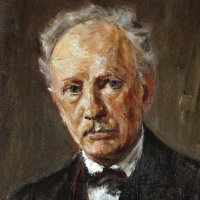
You might say that Strauss had two careers: as an orchestral composer, and as an opera one. His tone poems in the 1890s such as Don Juan and Till Eulenspiegel brought him immediate fame, but he wrote his last big orchestral work in 1915. Meanwhile his operas Salome (1905) and Elektra (1909) continued his radical Expressionism, but with Der Rosenkavalier (1911), he began a stylistic retreat that continued until his last opera, Capriccio, in 1942. 5.
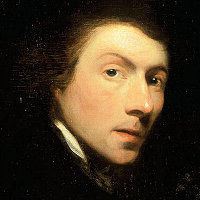
Although a patriot, Stuart, who was born in Rhode Island, went to Britain in 1775 and studied with Benjamin West, making his name with his 1782 full-length portrait of Sir William Grant (The Skater). He returned to the US in 1793 (leaving many commissions unfinished) and there became the de facto presidential portraitist, painting all six of the first Presidents. 3, 9.

Known for his lyrical poems and his Arthurian epic Idylls of the King, Tennyson was appointed Poet Laureate to Queen Victoria in 1850 and held the position until his death. He adopted his characteristic tone of elegiac retrospection relatively early, and carried it through a long career that established him as the most resonant voice of the Victorian era. 7.

Thomas won four Olivier awards for his 2001 musical Jerry Springer: the Opera. A pianist, performing comedian, actor, and television presenter, he also wrote the libretto for Mark-Anthony Turnage's 2011 opera Anna Nicole (see below). 4.
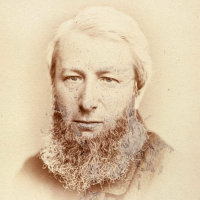
Until it went out of fashion, Thorburn specialized in miniatures painted on ivory. His subjects included Queen Victoria and other members of the British aristocracy. 2.
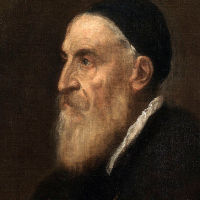
Arguably the greatest Venetian painter of the High Renaissance, he produced works in just about every genre over an exceptionally long career. Probably his greatest influence was in his handling of paint and use of color, which became a starting point for Rubens and others in the next century. 1, 7.
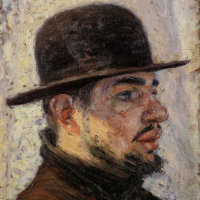
A hunting accident in childhood (he came from an aristocratic family) left Toulouse-Lautrec permanently stunted in stature, but this condition gave him both an entrée into the seamier side of Paris and the realism to depict it as he found it, with plenty of glamor certainly, but without idealization or moralizing. 3.
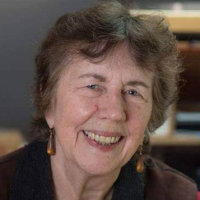
Tower began her career as a pianist, especially with the NY ensemble Da Capo Players, which she co-founded. Simultaneously, she was establishing a reputation as a composer, including a series of six works called Fanfare for the Uncommon Woman, each honoring a different American Woman in music. 1.
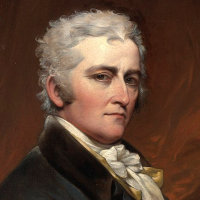
Trumbull fought in the American War of Independence, and founded his career on depictions of battles and other key historical events. He spent several years in London working with Benjamin West, and was even imprisoned there for several months for his part in the Revolution. 7.
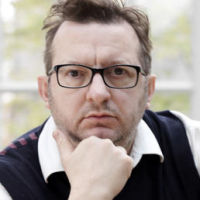
Turnage's operatic work includes Greek (1988, the Oedipus story relocated to the East End of London), The Silver Tassie (2000, after the play by Sean O'Casey), Anna Nicole (2013, with libretto by Richard Thomas), and Coraline (2018, after a novella by Neil Gaiman). 4.
GO TO: [A–C] [D–F] [G–K] [L–N] [O–R] [S–U] [V–Z]
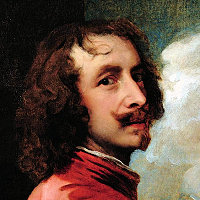
For a time the principal assistant to Peter Paul Rubens, Van Dyck had a shorter but similarly stellar and varied career, painting in most of the major baroque genres. He was especially known as a portraitist, particularly in England, where he served the courts of both James I and Charles I. 3, 7.

The most celebrated and influential northern painter in the earlier 15th century, responsible for developing a style of oil painting capable of magnificent detail and effects of light. His major work, the altarpiece in Ghent Cathedral, is recorded to have been begun by his perhaps even greater brother Hubert. He was a renowned portraitist, including the enigmatic Arnolfini Marriage in London, and the supposed self-portrait seen here. 1, 7.
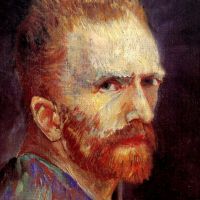
Beginning in his native Holland with dark paintings of peasant life, his style was transformed when he went to Paris in 1886, and thence to Arles, where he lived with Paul Gauguin. Although prolific in his output, he suffered from severe depression and eventually brought on his own death, while living close to his doctor in the north of France. 5.

Velázquez was the great master of the Spanish baroque, and with Rubens and Rembrandt, one of the giants of his century. He had been appointed court painter in 1624, at the age of only 25, with the exclusive right to paint the royal family. His historical, mythological, and genre scenes show an increasingly intricate imagination, especially as concerns the relationship of the painter to his work. 5.
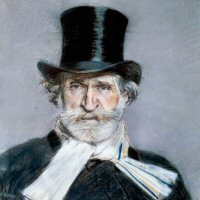
Verdi's two dozen or more operas (depending on how you count them) make him the leading Italian opera composer of his time and among the two or three greatest opera composers ever. After what he called his "years in the galleys," he hit his stride in the early 1850s with the trio of Rigoletto, Il Trovatore, and La Traviata. He intended Aïda to be his last work, but was persuaded out of retirement to write his final Shakespearean masterpieces: Otello (1886) and Falstaff (1893). 4.
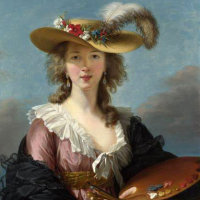
Specializing in portraiture, Vigée-Lebrun had charm and wit to match her talent, which won her many influential patrons, most notably Queen Marie Antoinette. She fled France at the Revolution and lived in London, Italy, Vienna, and St Petersburg, where she was part of the court of Catherine the Great. Her memoirs are a vital testament of her times and her own remarkable strengths as a woman. 3, 5.

Warhol (born Andrew Warhola Jr.) worked in many media beside painting, including silk-screen printing, sculpture, and film. Many of his images, such as those of Campbell soup cans, were not only taken from industrial sources, but reproduced multiple times by industrial methods. His studio, which he called The Factory, became the nerve center of American Pop Art. 11.
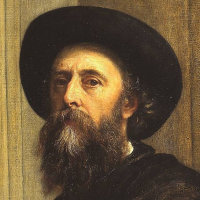
Watts, who once said "I paint ideas, not things," was a British pioneer of the Symbolist movement, and many of his works have allegorical overtones. He was briefly associated with the Pre-Raphaelite Brotherhood, and influenced by DG Rossetti, and even more briefly married to the teenage Ellen Terry, 30 years his junior; Choosing, his 1864 painting of her, remained her favorite portrait. 10.

Weingarten has published several series of photographs, such as 6:30 AM (the same view taken from his Malibu window each day for a year), and photo-collages such as Pentimento (superimposing historical images over an image of the same site today) and The Portrait Unbound (images associated with a particular person). 11.
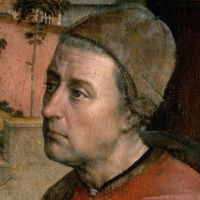
Very little is known of Rogier's life, except that he was highly successful in his time, with his works exported to Italy and Spain, and commissioned by princes both in the Netherlands and abroad. His extraordinary detail and emotionally intense compositions now place him firmly with Jan van Eyck and Robert Campin in the trinity of early Netherlandish masters. The image is a detail from his Saint Luke Drawing the Virgin, assumed to be a self-portrait. 1, 7.
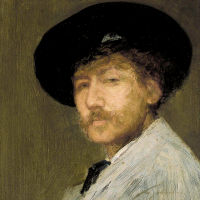
Whistler's American father was a railroad engineer who took work in Russia when the future artist was still a child, so his training and career took place almost entirely in Europe. He was famous for giving his near-abstract paintings titles such as Arrangement in Grey and Black (the portrait of his mother), thus emphasizing the connection between painting and music. 1, 9.

Although of peasant stock, he became drawing master to the Margravine of Baden in 1828. Her father supported his further study, and he eventually became the most sought-after court painter in Europe in the mid-19th century. 2.
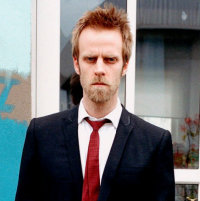
Wright enjoys a highly successful career as a portrait artist, with several works in the National Portrait Gallery. His 2001 portrait of past presidents of the British Academy won him the BP Portrait Award, a travel grant, and several other commissions. 7.

Newell Convers Wyeth, always known by his initials, was an American artist, creating dramatic illustrations to Treasure Island and over 100 other books. He also produced non-narrative paintings, but always claimed that illustration and painting were two entirely separate forms of art. His son and grandson, Andrew and Jamie Wyeth, achieved similar fame as artists. 2.
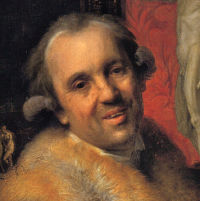
Zoffany settled in England in 1760 after working in Rome. He was fortunate to win the patronage first of the actor David Garrick and then of King George III. He made his fortune, however, in India between 1783 and 1789, painting various Indian princes and their courts. 1.
